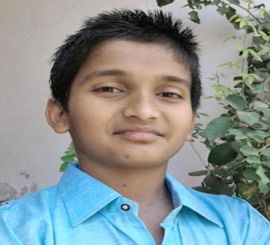Back
Curious Questions from Curious Minds!
Welcome to Curiopedia, where imagination and discovery take shape! Discover something new today with these curious questions from children. Click on the ‘View Answer’ button to find out the answer! If you want your (child’s) curious question answered and featured here, submit it now.
Month Year
-

East or west?
West Bengal is in the east. Then why it is known as ‘West’ Bengal?
Tejashree , Bidar, Karnataka
View AnswerHistorically, the Bengal province was made up of the regions we now know as West Bengal and Bangladesh. In 1905, for administrative purposes the British divided Bengal into two states — the Hindu majority became West Bengal and the Muslim majority East Bengal. Later, around Independence in 1947, it was decided that East Bengal would become a part of Pakistan, while West Bengal remained an Indian state. (In 1971, East Bengal broke off from Pakistan, and became an independent nation, renaming itself as Bangladesh.)
-

Colorful puzzle
Why is the rainbow a semicircle?
Angeline Francis Gladia , Cuddalore,Tamil Nadu
View AnswerRainbows are actually circles. They are formed when the sun’s rays pass through a million water droplets during a rain. And through a process of refraction, the light is bent (much like how an object looks bent when it is inserted into a glass of water). Since water droplets are circular, the sunlight follows a curve. But you end up seeing only half the circle because the other half is cut off by the horizon. If you see a rainbow from a plane, you may be able to see the complete circle.
-

Glow-in-the-dark?
Why do scorpions shine at night?
J. Bhanuprakash , Tenali, Andhra Pradesh
View AnswerScorpions don’t glow only at night. All scorpions glow under ultraviolet light, such as an electric black light or natural moonlight. The blue-green glow comes from a substance found in their hyaline layer, a thin but extremely tough coating in a part of the scorpion’s exoskeleton, called the cuticle.
-

Up, above the world so high
Why do stars twinkle?
Ikshwaku , Acharyakulam, Haridwar
View AnswerOn a clear, dark night, our eyes can see around 6,000 stars in the sky. They seem to twinkle, or change their brightness, all the time. In fact, most of the stars are shining with a steady light. The movement of air (sometimes called turbulence) in the atmosphere of earth causes the starlight to deflect slightly as it travels from the distant star through the atmosphere down to us on earth. So, though only a percentage of light is deflected, some of it comes to us straight, making it seem as if it is twinkling.